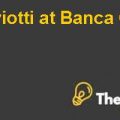Ben & Jerry’s: Preserving Mission and Brand within Unilever
- 1. Back Ground:
Ben and Jerry Ice Cream Company was founded by Ben Cohen and Jerry Greenfield in 1978. With the investment of $12,000, they opened their first shop in downtown Burlington on a renovated site. As their product got recognized, they opened their first franchise in Shelburne, Vermont in 1981. Ben & Jerry’s ice cream soon became popular on a national level for its innovative flavors made from fresh Vermont milk and cream. After their success at the national level, in late 1990s they went international.
Ben and Jerry’s commitment to social causes played a key role in the company’s unique marketing drive. They provided family working environment to their employees. In Ben and Jerry Company employees were encouraged to give suggestions that they quickly implemented. The distinctive culture of the company was the factor that attracted many employees. Ben and Jerry were acquired by Unilever in 2000. After merger Ben & Jerry's social mission faced challenges and opportunities that were unique in the company's history.
- 2. Problem statement:
The problems that needed to be addressed included: how to manage employee morale after merger with Unilever, how to maintain the company’s distinctive brand image under the direction of the parent company, whether to company should use artificial ingredients to meet consumer preferences and how to support to social causes while working under the umbrella of Unilever.
- 3. Critical Decisions:
Ben and Jerry’s manufacturing and distribution system restructuring decision after merger with Unilever was the most important decision; which apparently resulted in low employee morale due to change in job conditions and environment. Employees working abilities and skills would be compromised. Brand loyalty of Ben and Jerry’s was also affected by this decision. But on the other hand, this decision would show improvement in operational efficiency by reducing Ben & Jerry’s cost structure and bringing more ice creams to market through the better manufacturing and distribution techniques. These questions that should have been asked includes about the change in the processes and activities after acquisition, settlement of employee in new environment and continuation of its social services and programs.
- 4. Analysis of Ben Jerry:
From only thousand dollars, Ben and Jerry Ice Cream Company business grew into a million Dollar Corporation. During the start of 1990s they experienced slow growth rates and in 1994 they lost $1.9 million on the sales of $148.8 million .The revenue of Ben and Jerry in 1990 was $ 77.0 million, which grew to 237.0 million by the end of 1999. The number of employees in 1990 was 356 that grew to 841 by 1999. Ben and Jerry Ice Cream Company had a strong culture. The culture at B&J’s consists of many norms to promote innovation. The owners had a very personal relationship with their employees and encouraged them to embrace autonomy. The culture of the Ben and Jerry Ice Cream Company consists of many norms that promote innovation. The owner of the company had a very personal relationship with employees and he encouraged them to give suggestions that were implemented quickly but after the acquisition; the culture of the company had some changes as Unilever was of a local family root culture and it allowed lay-offs in the company whereas, there was no lay-off policy in the Ben and Jerry Ice Cream Company (Austin and Quinn, 2007).
Ben and Jerry should allow retaining the elements of their product, social and economic values. Ben and Jerry should retain the use of only natural integrants. This will help them to maintain organizational culture and product image of their company. The employees of Ben and Jerry should allow attending the public demonstration on environmental issues because this aligns with the social mission of both the companies.
- 5. General Understanding Of Business/ Organizational Change Dynamics And Concepts:
Ben and Jerry faced many challenges after the merger with the Unilever but they had experienced success in the past. The factors that played a major part in the success of Ben and Jerry included: the brand recognition, high quality premium ice cream along with a commitment to variety of social causes, distinctive organizational culture that attracted and retained many employees. A change of the ingredients would take away the brand image from Ben and Jerry. This would negatively affect the organizational culture of the company as well as morale of the employees. So, Ben and Jerry should only use natural ingredients. This would help the company to keep the morale of the employee high because of the delivery of high quality and natural products, which coincides with their core value. Secondly, lay-offs were not originally a part of Ben and Jerry before the acquisition so the employees that were laid-off should be personally informed of the specific reasons for the lay-off in the meeting with the .................................
This is just a sample partial case solution. Please place the order on the website to order your own originally done case solution.














